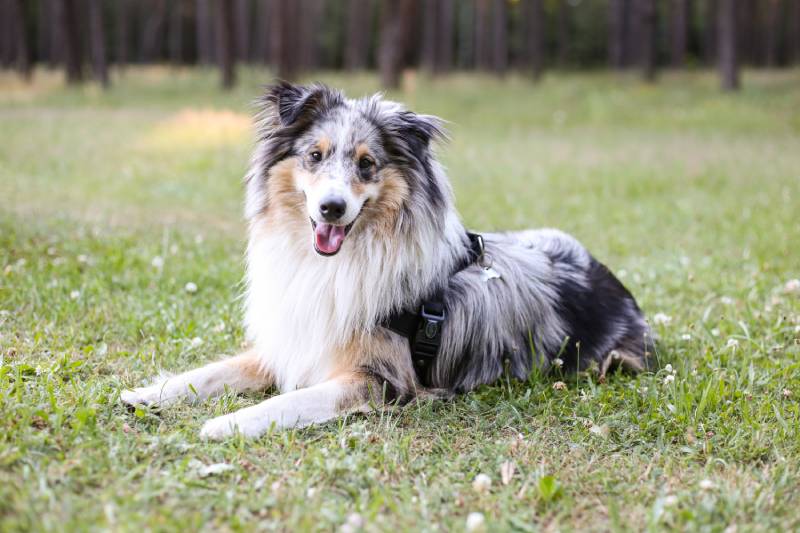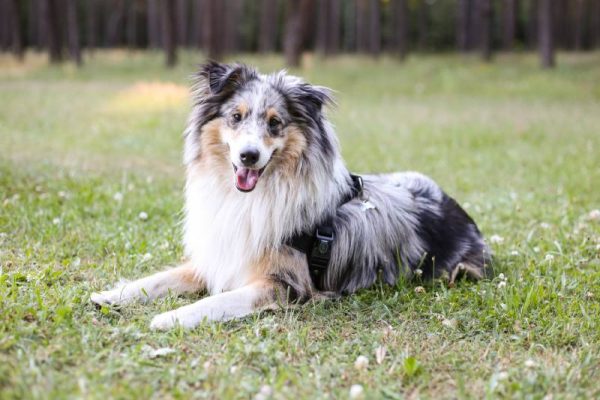Click to Skip Ahead
The Blue Merle Sheltie, also known as the Shetland Sheepdog, is an exceptional herding breed. These intelligent and medium-sized dogs make loyal companions and prove their worth as hard-working herders. They are eager to please, affectionate, adaptable, and easy to train; however, they are sensitive to harsh commands and require delicate training. Their unique color is special and slightly uncommon, which makes them a sought-after color variation of the breed.
Read on to discover more about the remarkable Blue Merle Shetland Sheepdog.
Breed Overview
Height:
13–16 inches
Weight:
15–25 pounds
Lifespan:
12–14 years
Colors:
Bi-colored or tri-colored black, white, and tan patterns: blue merle white and tan, blue merle and white
Suitable for:
Active families, people with farms, first-time owners, small children, multi-pet households
Temperament:
Loyal, intelligent, energetic, easy to train, playful, bright, affectionate, devoted, adaptable, sensitive
Blue Merle is a particular color variation of this breed, which results from a gene mutation that gives them their unique look through dilution of the black pigment. The dilution dulls patches of black into shades of gray, resulting in a beautiful yet unusual appearance of black, tan, and white, speckled throughout a blue color.
The color variation does not influence different characteristics, as they are just as energetic and affectionate as other color variations within the breed.
Blue Merle Shetland Sheepdog Breed Characteristics

The Earliest Records of the Blue Merle Shetland Sheepdog in History
The Shetland Sheepdog, more commonly referred to as the Sheltie, hails from the Shetland Islands, which is located within the northernmost point of the United Kingdom. These dogs, often mistaken as “miniature Collies,” share the same ancestry as their Collie cousins but are their own breed. They were bred to be smaller than Collies due to scarce food in the harsh and cold climate of the Shetland Islands—smaller dogs do not have as much of an appetite compared to larger herding dogs, and the smaller size was on purpose.
Unfortunately, the exact breeding history of these dogs has been lost due to the lack of documentation of the island’s native farmers, but we do know that during the 20th century, Shelties were brought to the Scottish mainland and bred down to a more suitable size to compensate for the scarce rations in the Shetland Islands. Interestingly, these dogs were mostly unheard of due to the island’s isolation; people did not know of the breed until the breed was brought to the Scottish mainland.
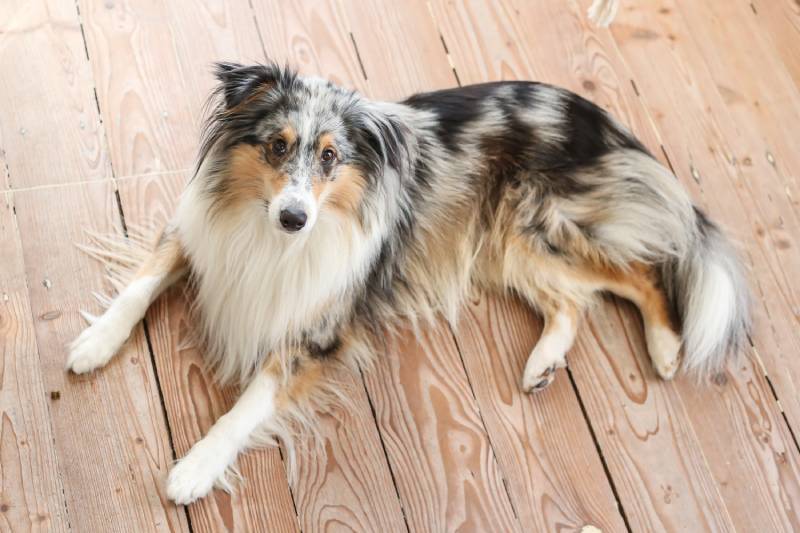
How the Blue Merle Shetland Sheepdog Gained Popularity
When the Shetland Sheepdog made its way to Scotland and England during the 20th century, they continued to serve as herding dogs and were a favorite among farmers for their ability to herd in the rough terrain of the Shetland Islands. However, their bright personalities and small size made the public realize that these dogs can also serve as loyal and affectionate companions while still serving their original purpose, which was herding sheep, ponies, and poultry.
Regarding the Blue Merle, their appearance is strikingly beautiful, which makes them even more popular pets to own given their playful and energetic characteristics; they also excel at canine sports, such as agility, rally, and obedience events, which made them even more appealing to potential dog owners. Even though this breed continues to work as herding dogs, they still make excellent companions, as well as therapy dogs, and are still popular canines to own.
Formal Recognition of the Blue Merle Shetland Sheepdog
The Shetland Sheepdog was first recognized by the Kennel Club of England in 1909, and just a couple of years later, in 1911, the American Kennel Club (AKC) formally recognized the breed. The American Shetland Sheepdog Association (ASSA) is the AKC parent club of the breed and was formed in 1929. This club’s purpose is to preserve the integrity and interests of the breed through education, rescue, research, and responsible breeding. Today, the club has over 767 members and over 66 member breed clubs scattered throughout the United States.

Top 5 Unique Facts About the Blue Merle Shetland Sheepdog
1. They Are Reserved with Strangers
This is an affectionate and devoted family dog, but they tend to be unsure and reserved with people they don’t know, so don’t be surprised if your Blue Merle Sheltie is shy and avoids strangers. However, they are not typically aggressive with strangers.

2. The Word Blue in the Name Is Misleading
The Blue Merle Sheltie is not actually blue. The “Blue Merle” term comes from the different shades of gray that occur from the diluted black pigment. The diluted black pigment is also what makes the irregular patches of pattern and size throughout the coat.
3. They Could Have Brown or Blue Eyes
One would think that Blue Merle Shelties all have blue eyes, but this isn’t always the case. They have a genetic mutation that causes blue eyes, but they could have one blue eye and one brown eye or either of the two.
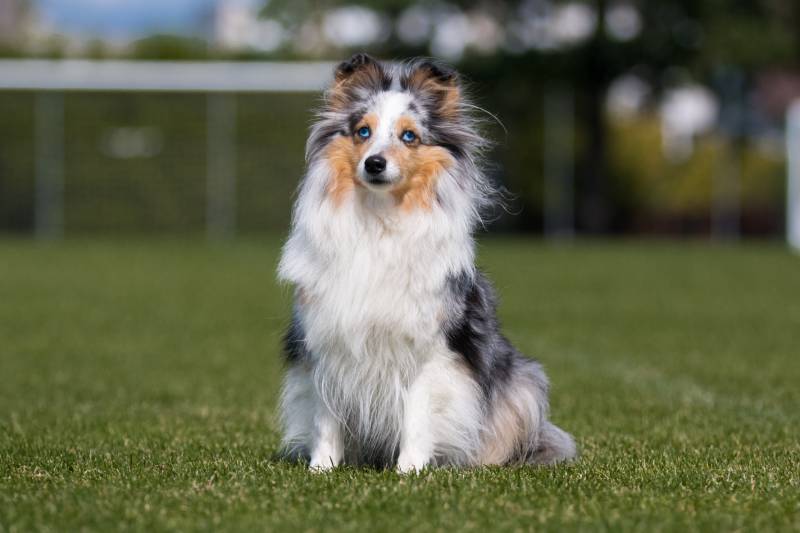
4. They Prefer Colder Climates
It’s no wonder that the Blue Merle Shetland Sheepdog prefers cold climates, given their place of origin. The Shetland Islands have a cold, harsh climate with rugged terrain, and these dogs were bred to withstand the environment. They have a double coat, which helps keep them warm in extremely cold weather. Needless to say, they can overheat quickly in hot temperatures.
5. They Excel in Everything!
We’ve touched on their versatility but have only scratched the surface. Given their bright, playful, and intelligent temperaments, these dogs excel in canine sports and are excellent herders. They are extremely smart and love learning new tricks. In fact, they are considered the top canine competitors in the world.
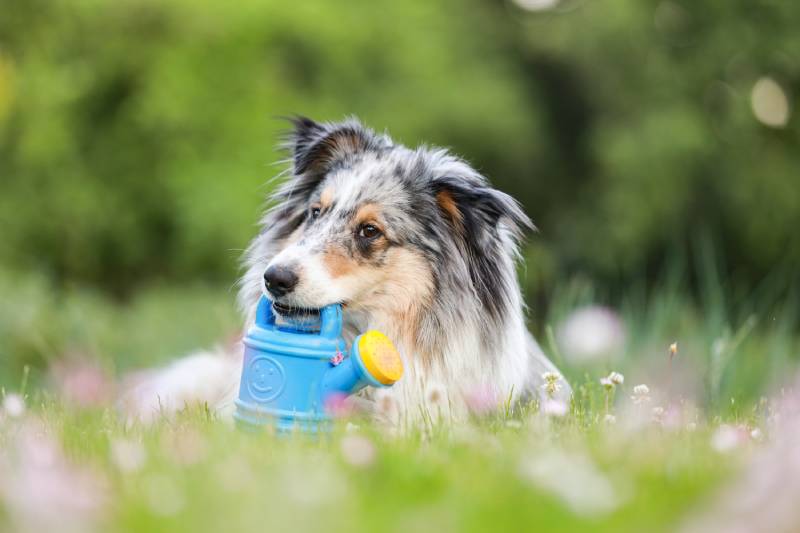
Does the Blue Merle Shetland Sheepdog Make a Good Pet?
The Shetland Sheepdog makes an excellent pet regardless of the color variations. They are affectionate, loyal, intelligent, playful, bright, and eager to please. They are easy to train and do well with praise and treats. However, they are sensitive dogs and do not respond well to harsh tones or commands; it’s best to use positive reinforcement with this breed.
Proper training is vital with this breed—without proper training, they may bark excessively and try to herd other pets in the home and humans. They require early socialization as well to keep these unwanted behaviors away. Regular exercise is needed to keep them in shape and healthy, and you can have fun teaching your Blue Merle Sheltie agility courses, rallies, and even participating in obedience events.
These dogs are extremely bright and are happiest with a job or task to do, which makes them perfect for active families.

Final Thoughts
The Blue Merle Sheltie, or Shetland Sheepdog, is a strikingly beautiful dog with a unique appearance. Regardless of color variation, these dogs make exceptional family companions and are easy to train. They excel in almost anything they do and are considered the top canine competitors in the world.
These dogs require early socialization to prevent excessive barking, but with their intelligence, they will understand quickly how to behave appropriately. If you’re looking for a fun, playful, intelligent, and devoted companion, you can’t go wrong with a Blue Merle Sheltie.
Featured Image Credit: arturs.stiebrins, Shutterstock

